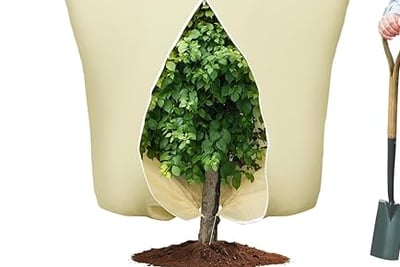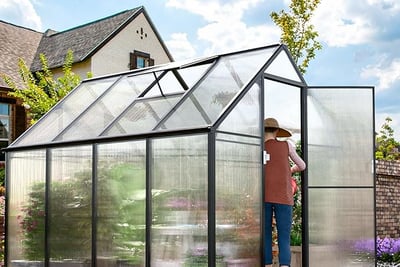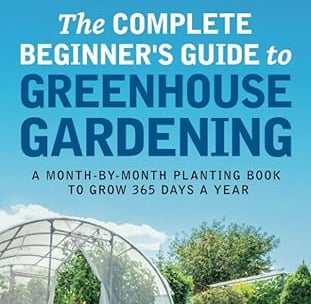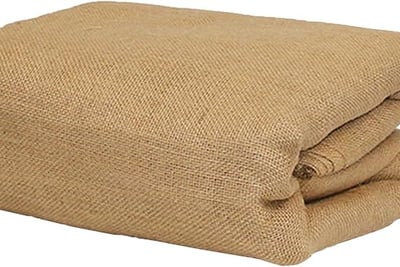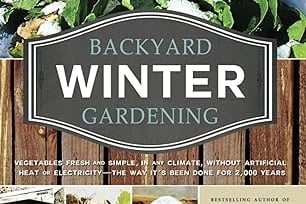Winter Gardening Tips: Growing Indoors & Protecting Outdoor Plants
8 min read


Introduction to Winter Gardening
Winter gardening presents a unique set of challenges and opportunities for both seasoned and novice gardeners. As temperatures decline and daylight hours diminish, many might believe that gardening activities come to a standstill. However, this time of year can still be fruitful for those who adapt their approaches to suit the conditions. Winter gardening encompasses not only the protection and care of outdoor plants but also the cultivation of plants indoors, broadening the scope of gardening possibilities.
Understanding the requirements of different plant species is crucial during the colder months. Many plants enter a state of dormancy, where growth significantly slows down, requiring less water and nutrients. Conversely, certain varieties thrive in cooler climates, allowing gardeners to explore a diverse array of hardy vegetables and ornamental plants. Crucially, rearranging one’s gardening strategy to accommodate seasonal changes can foster a rewarding experience.
For those looking to continue their gardening practices indoors, winter provides ample opportunities to grow herbs, houseplants, and even culinary crops. Utilizing limited space effectively, such as using windowsills or indoor gardening kits, allows for the enjoyment of greenery throughout the winter months. It’s essential to consider factors including light availability, humidity levels, and temperature fluctuations to create an environment conducive to growth. Thus, a keen awareness of plant needs during winter is invaluable.
Moreover, outdoor gardeners face the task of ensuring their plants are safeguarded against frost and harsh conditions. Strategies such as using mulch, protective covers, or even cold frames can effectively shield vulnerable plants from the elements. By understanding the nuances of winter gardening, gardeners can maximize their efforts, resulting in a more dynamic and enriching experience during this often-overlooked season.
Benefits of Indoor Gardening in Winter
Indoor gardening during the winter season presents numerous advantages that can enhance both your living environment and overall well-being. One of the primary benefits is the significant improvement in air quality. Indoor plants can filter toxins from the air, reducing levels of common indoor pollutants and enhancing oxygen levels. By incorporating houseplants into your indoor space, you create a more inviting and healthier atmosphere.
Moreover, growing plants indoors provides access to fresh produce all year round. Herbs such as basil, parsley, and mint are excellent choices for indoor gardening during winter, as they thrive in a controlled environment. These herbs not only enrich your culinary experiences but also contribute to healthier eating by providing fresh ingredients at your fingertips. Additionally, leafy greens like spinach and lettuce can grow well inside, offering nutritious options despite the cold weather outside.
Another important aspect of winter gardening is its therapeutic benefits. Engaging in indoor gardening can reduce stress and promote mental health by providing a nurturing and gratifying activity. The process of sowing seeds, watering plants, and witnessing their growth fosters a sense of accomplishment and connection with nature. This can be particularly beneficial during the winter months when many individuals experience seasonal depression due to reduced sunlight and outdoor activities.
Certain plants are especially suited to thrive indoors during winter, including snake plants, pothos, and peace lilies. These resilient species are not only aesthetically pleasing but also demonstrate air-purifying qualities, making them beneficial companions in your winter gardening efforts. By choosing the right indoor plants, you can enjoy the myriad benefits of gardening throughout the year and transform your space into a vibrant sanctuary amidst the winter chill.
Choosing the Right Indoor Plants
Winter gardening presents unique challenges, particularly concerning the selection of indoor plants that can thrive in less than ideal conditions. During these months, adequate light and moisture can be limited, making it vital to choose plants that are well-suited to survive and flourish indoors. When selecting indoor plants for winter, consider varieties known for their adaptability to lower light conditions and minimal maintenance demands.
Herbs such as basil, thyme, and parsley are excellent choices for indoor gardening in winter. They not only enhance culinary dishes but also require relatively little light—around six hours of indirect sunlight is typically sufficient. Positioning these herbs near a window or under grow lights can facilitate their growth. Furthermore, they can be harvested repeatedly, providing a continuous source of fresh flavor throughout the coldest months.
On the other hand, popular houseplants like pothos, snake plants, and peace lilies are ideal for enhancing indoor air quality and aesthetics. These plants are renowned for their resilience, making them suitable for busy individuals or novice gardeners. They thrive in low-light environments and can tolerate periods of neglect, thus presenting a low-maintenance solution for indoor winter gardening.
When selecting indoor plants, also consider the humidity and temperature of your environment. Tropical varieties such as ferns or spider plants prefer a more humid atmosphere, which can be achieved by misting or placing a humidifier nearby. Additionally, ensure that the selected plants are appropriate for the temperature range of your home, as sudden changes can impact their health.
Ultimately, choosing the right indoor plants involves a balance of personal preference, desired maintenance level, and environmental conditions, making winter gardening a rewarding endeavor.
Essential Indoor Gardening Tips
Growing plants indoors during the winter season provides a unique opportunity to enjoy vibrant greenery and promote well-being despite the chilly weather outside. To cultivate plants successfully indoors, attention must be given to several critical factors, including light levels, humidity, watering practices, and temperature control.
One of the first considerations in indoor gardening is light availability. Natural light can be limited during winter months, making it vital to assess the light requirements of your plants. For many indoor species, supplemental grow lights are a necessary investment. These lights replicate the sun’s natural spectrum, helping plants thrive even in low-light conditions. Positioning these lights at an appropriate distance from the plants—generally between 12 to 24 inches—ensures that they receive adequate illumination without the risk of scorching the leaves.
Humidity levels indoors can drop significantly in winter due to heating systems. Most indoor plants prefer humidity levels around 40-60%. To maintain proper humidity, consider using a humidifier, grouping plants together, or placing trays filled with water near your plants. Regularly misting the foliage can also help, but care should be taken not to overdo it, as excessive moisture can lead to fungal issues.
Watering practices during winter should be adjusted to accommodate the cooler temperatures and reduced light. Indoor plants typically require less water in the winter, so it is essential to allow the topsoil to dry out before rewatering. Checking soil moisture with your finger can help determine when to water effectively. Furthermore, maintaining a consistent temperature within the indoor environment is crucial; most plants prefer temperatures between 65°F and 75°F during the day and slightly cooler at night. By paying attention to these essential factors, indoor gardening enthusiasts can successfully nurture plants throughout the winter season.
Protecting Outdoor Plants from Winter Conditions
As winter approaches, it is essential for gardeners to implement strategies that protect outdoor plants from harsh environmental conditions. The cold weather can pose significant threats to plants, including frost, snow, and icy winds. Understanding how to shield these plants is crucial in promoting their survival until spring.
One effective technique for protecting outdoor plants is mulching. Applying a layer of mulch around the base of plants provides insulation, helping to maintain soil temperature and retain moisture. Organic mulches, like straw or shredded leaves, also gradually break down, enriching the soil as they decompose. This not only protects the roots but also improves soil health over time.
Covering plants with protective materials is another valuable strategy. Gardeners may use frost cloths, burlap, or old blankets to cover sensitive plants during particularly cold nights. These coverings act as barriers against frost and help trap heat, creating a microclimate that can significantly reduce the risk of freezing. It is important to ensure that the coverings are not too tight, allowing for air circulation, which is vital for plant health.
In addition to mulching and covering, strategic placement of plants can enhance their resilience. When positioning plants, consider factors such as sunlight exposure and wind direction. Placing plants against a south-facing wall can provide warmth, while surrounding them with taller plants can shield them from harsh winds. Recognizing the hardiness zone of each plant is key; this knowledge allows gardeners to select appropriate species that can endure the expected winter conditions.
Overall, by implementing these protective measures during winter months, gardeners can help ensure that their outdoor plants remain healthy and vibrant when the growing season returns. Prioritizing care and attention will enhance both plant resilience and garden success.
Winter Planting Techniques for Outdoor Gardens
Winter gardening presents unique challenges and opportunities for gardening enthusiasts looking to maintain their outdoor spaces. One effective technique is winter sowing, which involves planting seeds in containers that are placed outside in the snow or cold temperatures. This method allows seeds to naturally experience the cold dormancy they require before germination, effectively mimicking the cycles of nature. The containers act as mini-greenhouses, protecting seedlings from extreme weather while providing adequate moisture from winter precipitation. Notably, this technique is ideal for cool-season crops such as peas, kale, and spinach that thrive in colder conditions.
Another valuable strategy is the cultivation of cold-tolerant crops. These crops are specially selected for their resilience to frost and low temperatures. By planting varieties such as garlic, onion, and hardy greens in late fall or early winter, gardeners can take advantage of the cooler climate, which can enhance flavor and reduce the prevalence of pests. Utilizing fleece covers or row covers can also provide additional protection against harsh weather, allowing outdoor plants to flourish despite the cold.
Care for dormant plants during winter is equally critical in preserving the health of outdoor gardens. While many plants will enter a state of dormancy, it is essential to monitor their conditions, ensuring that they receive adequate moisture without risking overwatering, which can lead to root rot. Mulching around the base of perennials can help insulate the roots and conserve moisture. Additionally, minimizing disturbances in the garden, such as heavy pruning, can foster better recovery as plants prepare for the growth spurt of spring.
By employing winter sowing, selecting cold-tolerant crops, and carefully tending to dormant plants, gardeners can ensure their outdoor gardens remain vibrant and ready for the spring growing season ahead.
Final Thoughts and Encouragement for Winter Gardeners
As the winter months approach, many gardeners may find themselves questioning whether it is possible to maintain their cherished hobby during such a cold season. However, as discussed throughout this blog, winter gardening is not only feasible but can also be incredibly rewarding. Embracing the challenges presented by winter conditions allows for unique gardening experiences that can invigorate and inspire.
To cultivate indoor plants successfully, it is essential to choose varieties that thrive in lower light conditions and maintain appropriate humidity levels. Utilizing grow lights can also enhance the growth of your indoor plants, facilitating a lush indoor garden that remains vibrant throughout the winter. Additionally, incorporating winter-specific plants such as amaryllis or paperwhite bulbs can introduce festive colors and scents to your home while keeping your gardening passion alive.
Equally important is the protection of outdoor plants during the colder months. Implementing strategies such as mulching, creating windbreaks, and providing frost covers can significantly increase the chances of your plants' survival. Awareness of the specific needs of each plant type is crucial, as some may require more attention than others to endure harsh winter conditions. Through diligent care and attention, your outdoor garden can thrive, even in winter.
Ultimately, winter gardening is not simply an act of survival; it is an opportunity to learn and grow as a gardener. The knowledge gained while navigating the challenges of this season can deeply enrich your horticultural skills. So, let this winter inspire you to explore both indoor gardening techniques and effective outdoor plant protection. By doing so, you will not only keep your gardening dream alive during the colder months but also emerge as a more skilled and resilient gardener.
